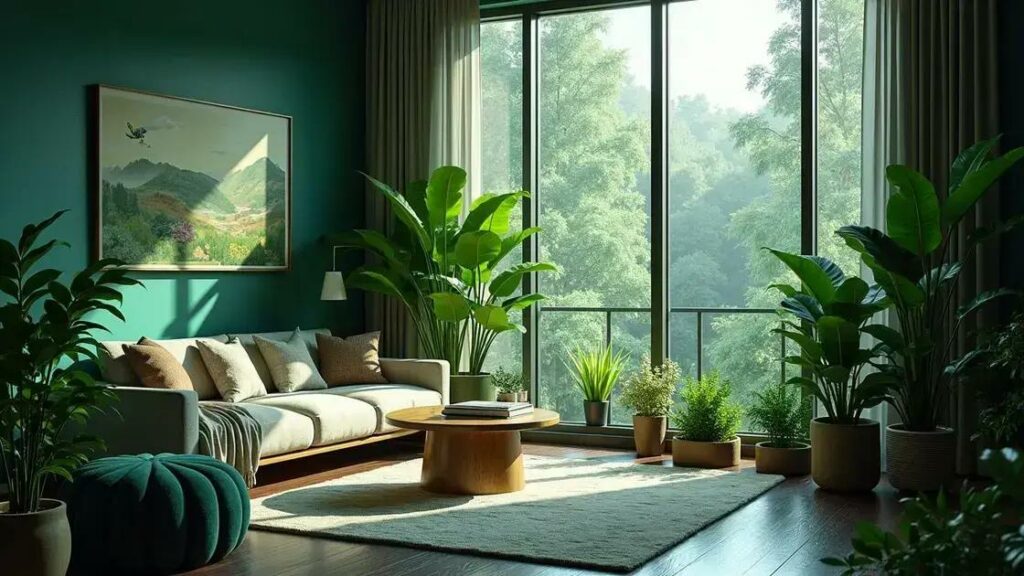How to take care of jade plant indoors can be a source of intrigue for many plant enthusiasts. While these beautiful succulents are known for their resilience, the right care is crucial for them to flourish. Unveiling practical secrets can turn your indoor space into a green haven. Dive into our tips on watering, sunlight, and soil requirements that make a noticeable difference.
Table of Contents
ToggleWatering schedule for jade plants indoors
Watering schedule for jade plants indoors is essential for their growth and health. These resilient succulents thrive best with the right balance of moisture, preventing overwatering or underwatering. Here’s a detailed look at how to effectively water your jade plant indoors:
- Frequency of watering: Water your jade plant every 2-3 weeks during the growing season (spring and summer). Reduce this frequency in fall and winter to once a month.
- Signs of overwatering: Yellowing leaves, mushy stems, and a musty smell from the soil indicate too much water.
- Signs of underwatering: Leaves will appear wrinkled and shriveled if they lack moisture.
Establishing a routine
Creating a reliable watering routine helps in maintaining jade plant health. Use the following steps:
- Check the soil moisture level: Insert your finger about an inch into the soil. If it feels dry, it’s time to water.
- Water thoroughly: Ensure water drains from the bottom of the pot, promoting healthy root growth.
- Adjust as needed: Environmental factors like humidity and temperature can influence how quickly the soil dries out.
Watering techniques
Consider the following watering techniques to enhance your jade plant’s health:
- Deep watering: It’s better to water deeply but less frequently than giving small amounts often. This encourages deeper root growth.
- Temperature of water: Use room temperature water to avoid shocking the plant.
For further insight on best practices in exploring indoor gardening techniques, consistency in care can significantly elevate your jade plant’s health.
Optimal sunlight exposure for healthy jade plants

Optimal sunlight exposure for healthy jade plants is crucial in ensuring their vibrant growth. These hardy succulents thrive best when they receive the right amount of sunlight, helping them maintain their lush green leaves and overall health.
Understanding sunlight needs
Jade plants prefer bright, indirect sunlight. Here are key points to consider for achieving optimal sunlight exposure:
- **Duration of sunlight:** Aim for 6 to 8 hours of indirect sunlight daily for optimal growth.
- **Type of light:** East or south-facing windows are ideal as they provide gentle morning sunlight, reducing the risk of leaf burn.
- **Signs of inadequate light:** If the leaves become elongated or leggy, your jade plant needs more light.
Adjusting exposure based on season
Light requirements can shift with the seasons. Use the following strategies:
- In summer, ensure the plant is not exposed to harsh afternoon sun, which can scorch the leaves.
- During fall and winter, provide additional artificial light if natural light diminishes.
Common misconceptions
Many believe jade plants can survive in dark corners, but this is false. Here are some common myths:
- **Myth:** Jade plants don’t need much light.
**Truth:** They thrive in bright, indirect light. - **Myth:** Direct sunlight is always good.
**Truth:** Too much direct sunlight can harm the leaves.
For further insights on maintaining plant health, consider exploring indoor gardening techniques to enhance your jade plant’s living conditions.
Soil requirements and fertilization for jade plants
Soil requirements and fertilization for jade plants are essential for ensuring their healthy growth and longevity. These beautiful succulents thrive in specific soil conditions, which can significantly affect their well-being.
Choosing the right soil mix
The best soil for jade plants is well-draining and allows for adequate airflow. Here are key points to consider:
- **Cactus soil mix:** A commercial cactus or succulent mix works well, providing the necessary drainage.
- **DIY soil mix:** Alternatively, mix regular potting soil with sand or perlite to enhance drainage.
- **pH level:** Aim for a slightly acidic to neutral pH (around 6.0 to 7.0) for optimal growth.
Fertilization schedule
Caring for your jade plant involves not only soil selection but also proper fertilization. Follow these guidelines:
- Fertilizing frequency: Fertilize once every 4-6 weeks during the growing season (spring and summer).
- Type of fertilizer: Use a balanced, water-soluble fertilizer diluted to half strength, or opt for a specialized succulent fertilizer.
- Signs of over-fertilization: Look for signs like leaf burn or yellowing; if observed, reduce the amount of fertilizer.
Common concerns
When it comes to soil and fertilization practices, many plant owners have misconceptions:
- **Myth:** Any potting soil can be used.
**Truth:** Jade plants require specific soil that drains well. - **Myth:** Fertilization is unnecessary for indoor plants.
**Truth:** Regular fertilization aids healthy growth and flowering.
For more information on selecting the best conditions for your plants, you might want to check out exploring indoor gardening techniques to improve your jade plant care.
In conclusion
Caring for jade plants requires attention to several essential aspects, from understanding their watering schedule and optimal sunlight exposure to knowing the right soil and fertilization methods. By following these tips, you can create a thriving environment for your jade plants, ensuring they remain lush and healthy. For even more guidance on enhancing your indoor gardening, check out these tips on enhancing your indoor garden.

